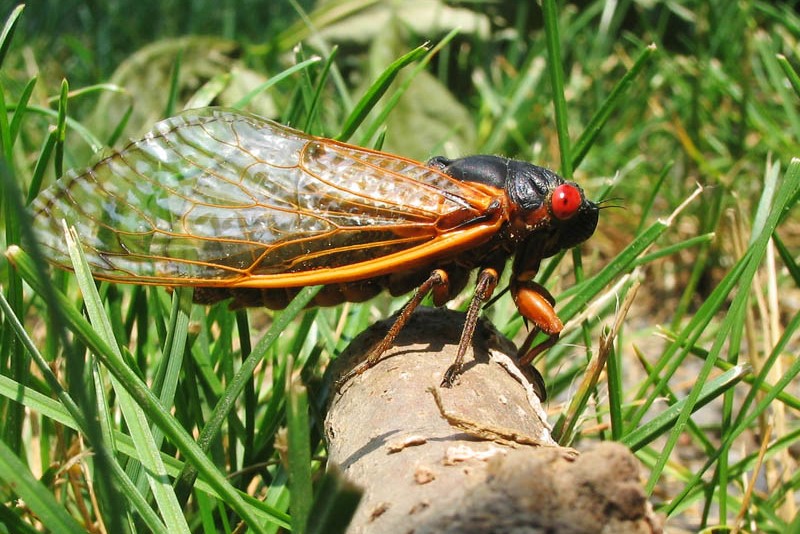Brood X is Coming and Here’s What You Should Know
Credit: By Pmjacoby – Own work, CC BY-SA 3.0, https://commons.wikimedia.org/w/index.php?curid=25556567 The cicadas will first emerge in southern states towards the final days of March. This means that there’s a good chance that you’ll see your fair share of cicadas this spring.
April 13, 2021
This spring, Brood X cicadas, pronounced brood ten, will claw their way out of the earth. They will emerge in the hundreds of billions, leaving their underground homes where they have been living for 17 years. The first cicadas that emerge will serve as a sacrifice for the many more to come, being feasted upon by a multitude of creatures, including snakes, raccoons, birds, and squirrels. Their mating songs will reach up to 100 decibels, similar to that of a chainsaw, and they will die after intercourse. This may sound like something out of a horror film, but the story of these bugs is fascinating.
In North America, there are seven species of periodical cicadas. Four have a 13-year cycle and three have a 17-year cycle. Brood X, which has a 17-year cycle, will start its life as a tiny egg in a groove of a tree limb. When it hatches, it will tumble from the groove to the ground and start digging, searching for roots to eat. It will then live underground for 17 years, tunneling and feeding until they emerge at the surface as nymphs.
Once aboveground, they will climb a vertical surface and shed their exoskeleton. Their skin will harden and their wings will inflate, and then they will spend the rest of their time looking for a mate. After mating, the female cicada will deposit her eggs in a groove and then die. The cycle will then repeat itself.
Although these cicadas may seem like a nuisance, they have their fair share of redeeming qualities. They improve soil conditions because they aerate the ground when they tunnel to the surface. They also serve as food for many birds, and believe it or not, some humans like to snack on the insects too. They make a protein-rich snack, while also being gluten-free and low in fat and carbohydrates. They reportedly can taste like asparagus, seafood, or even popcorn.
The last time this brood officially emerged was 2004, but some were seen emerging randomly in 2017. Other unexpected emergences have occurred in other broods, including Brood III, Brood V, Brood XIII, and Brood XIV, which leads scientists to think that climate change might be at the root of this.
Air temperatures, which influence soil temperatures, have been getting warmer due to climate change. Cicadas surface when the ground temperature reaches around 65 degrees, which explains why they have begun to emerge earlier. In addition to this, they know when they need to emerge based on the fluid flow in trees. Some years have been so warm that trees have leafed out earlier, leading to earlier cicada emergences. Although these random emergences are likely climate-driven, it is unknown whether it is anthropogenic or cyclical.
The cicadas will first emerge in southern states towards the final days of March. This means that there’s a good chance that you’ll see your fair share of cicadas this spring. If you encounter any cicadas this spring, and you would like to contribute to science, you can download the app Cicada Safari where you can take a picture of any cicadas you see. These pictures will go to Mount Saint Joseph University in Cincinnati and students at the university will create a cicada map based on the pictures they receive.
Sources:
https://www.washingtonpost.com/climate-environment/2021/03/09/cicadas-broodx-environment/
https://www.insider.com/bugs-you-can-eat-2018-10#cicadas-can-be-cooked-up-to-taste-like-popcorn-11









